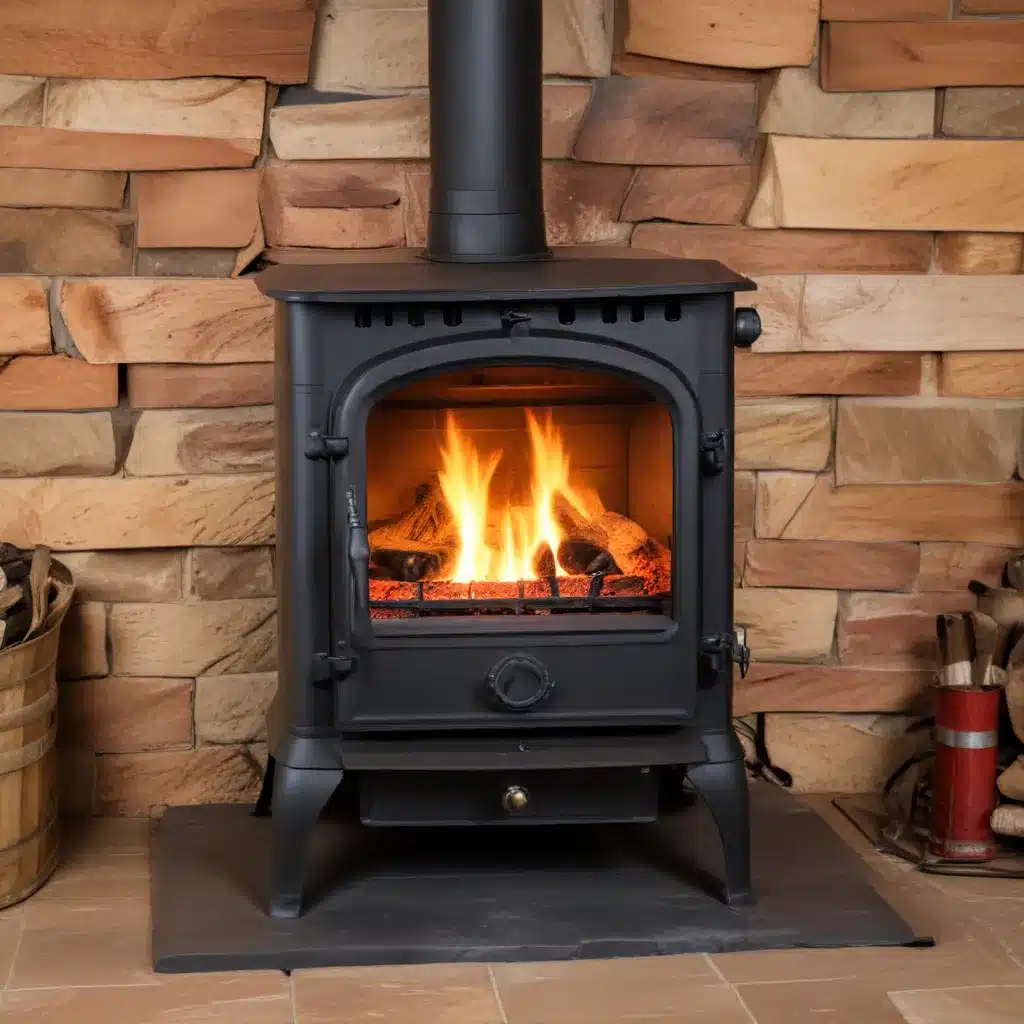
Understanding Creosote Buildup and Its Dangers
As a seasoned expert in wood stove heating solutions, I know that proper maintenance is crucial to ensure the safe and efficient operation of your wood-burning appliance. One of the primary concerns when it comes to wood stove usage is the accumulation of creosote in the chimney. Creosote is a highly flammable byproduct of incomplete combustion, and its buildup can lead to devastating chimney fires if left unchecked.
Creosote forms when wood is burned at lower temperatures, resulting in the release of water vapor and unburned organic compounds that cling to the inner walls of the chimney. Over time, these deposits can thicken, creating a fire hazard. Chimney fires can be extremely dangerous, causing significant damage to the structure and potentially leading to house fires. It is essential to understand the causes of creosote buildup and implement effective strategies to prevent it.
Optimizing Combustion and Fuel Preparation
One of the most effective ways to prevent creosote buildup is to ensure complete combustion of the wood fuel. This can be achieved by following a few key steps:
-
Dry Wood Fuel: Burning wood with a high moisture content can lead to incomplete combustion, resulting in increased creosote formation. It is recommended to use well-seasoned wood that has been dried for at least 6-12 months, with a moisture content of 20% or less.
-
Proper Stove Operation: Adhere to the manufacturer’s recommendations for starting and maintaining a fire in your wood stove. This typically involves building a hot, well-ventilated fire and avoiding smoldering or low-heat conditions.
-
Sufficient Air Supply: Ensure that your wood stove is receiving an adequate supply of combustion air. Insufficient air can lead to incomplete combustion and increased creosote buildup.
-
Stove Pipe Thermometer: Consider installing a stove pipe thermometer to monitor the temperature of the flue gases. Maintaining a flue temperature above 250°F (121°C) can help prevent creosote condensation.
By focusing on these key aspects of wood stove operation, you can significantly reduce the risk of creosote buildup and minimize the likelihood of a chimney fire.
Routine Inspection and Cleaning
Regular inspection and cleaning of your wood stove’s chimney and stovepipe are essential for maintaining a safe and efficient heating system. Here are some best practices to follow:
Chimney Inspections
- Inspect the chimney annually, or more frequently if the stove is used extensively, to check for any cracks, damage, or excessive creosote buildup.
- Look for signs of deterioration, such as missing or damaged bricks, mortar, or flue liners, which can compromise the integrity of the chimney.
- Ensure that the chimney is free of obstructions, such as bird nests or other foreign materials, that could impede the proper flow of smoke and gases.
Chimney Cleaning
- Hire a professional chimney sweep to clean the entire length of the chimney, including the stovepipe, at least once a year, or more frequently if needed.
- Alternatively, you can use a stiff wire chimney brush to manually clean the chimney, taking care to remove any accumulated creosote or soot.
- Avoid using techniques like tire chains or weighted bags, as they may damage the flue liner and create additional problems.
Ash Removal and Storage
- Regularly remove ashes from the wood stove, storing them in a non-combustible metal container with a tight-fitting lid.
- Place the ash container on a non-combustible surface, such as a concrete pad or gravel, away from any combustible materials.
- Properly dispose of the ashes, as they can remain hot for several days and pose a fire hazard if not handled with care.
By diligently maintaining your wood stove’s chimney and adhering to a regular cleaning schedule, you can significantly reduce the risk of creosote buildup and prevent potentially devastating chimney fires.
Supplementary Safety Measures
In addition to the maintenance strategies outlined above, there are several supplementary safety measures you can implement to further protect your home and family:
-
Fire Extinguishers: Ensure that you have a multipurpose fire extinguisher readily available near the wood stove, in case of a fire emergency.
-
Smoke and Carbon Monoxide Detectors: Install smoke detectors throughout your home and carbon monoxide detectors near the wood stove and in sleeping areas. These devices can provide early warning of potential hazards.
-
Chimney Caps and Spark Arrestors: Consider installing a chimney cap or spark arrestor to prevent the escape of embers and sparks, which could ignite nearby combustible materials.
-
Creosote-Reducing Additives: While the effectiveness of creosote-cleaning logs is questionable, you may want to experiment with other creosote-reducing additives or catalysts that can be added to the fire to help break down the buildup.
-
Professional Inspections: Hire a professional chimney sweep or certified wood stove technician to thoroughly inspect your system annually, ensuring that it is operating safely and efficiently.
By combining proactive maintenance, safety precautions, and the use of specialized equipment, you can create a comprehensive strategy to prevent chimney fires and ensure the long-term, safe operation of your wood stove.
Conclusion
Preventing chimney fires is a critical aspect of responsible wood stove ownership and operation. By understanding the causes of creosote buildup, optimizing combustion, and implementing regular inspection and cleaning routines, you can significantly reduce the risk of a potentially devastating fire.
Remember, wood stoves can be a highly efficient and cost-effective heating solution, but they require diligent maintenance to ensure the safety of your home and family. By following the strategies outlined in this article, you can enjoy the warmth and ambiance of your wood stove while prioritizing the prevention of chimney fires.
For more information on wood stove maintenance, energy-efficient heating solutions, or any other inquiries, please visit https://woodstoveheaters.com/. Our team of experts is dedicated to providing practical, up-to-date advice to help you maximize the benefits of your wood-burning appliance.


